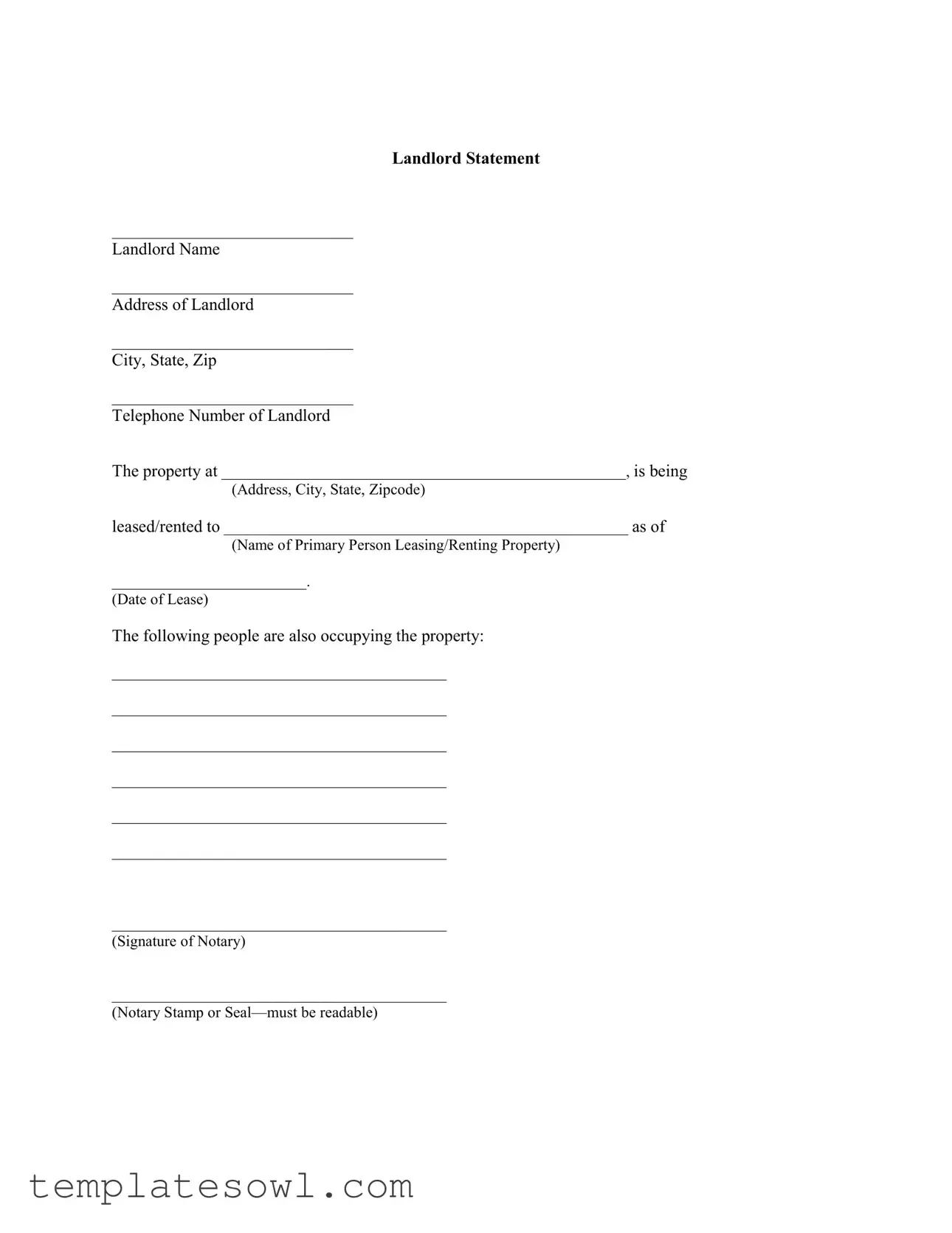LANDLORD STATEMENT
_______________________________
Landlord Name
_______________________________
Address of Landlord
_______________________________
City, State, Zip
_______________________________
Telephone Number of Landlord
The property at ____________________________________________________, is being
(Address, City, State, Zipcode)
leased/rented to ____________________________________________________ as of
(Name of Primary Person Leasing/Renting Property)
_________________________.
(Date of Lease)
The following people are also occupying the property:
___________________________________________
___________________________________________
___________________________________________
___________________________________________
___________________________________________
___________________________________________
___________________________________________
(Signature of Notary)
___________________________________________
(Notary Stamp or Seal—must be readable)
